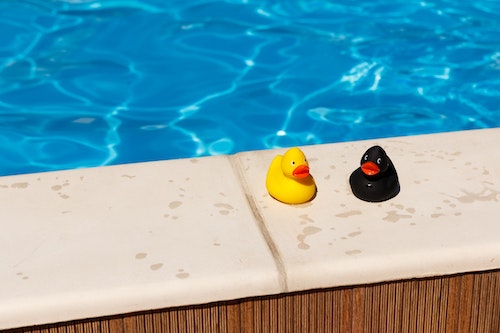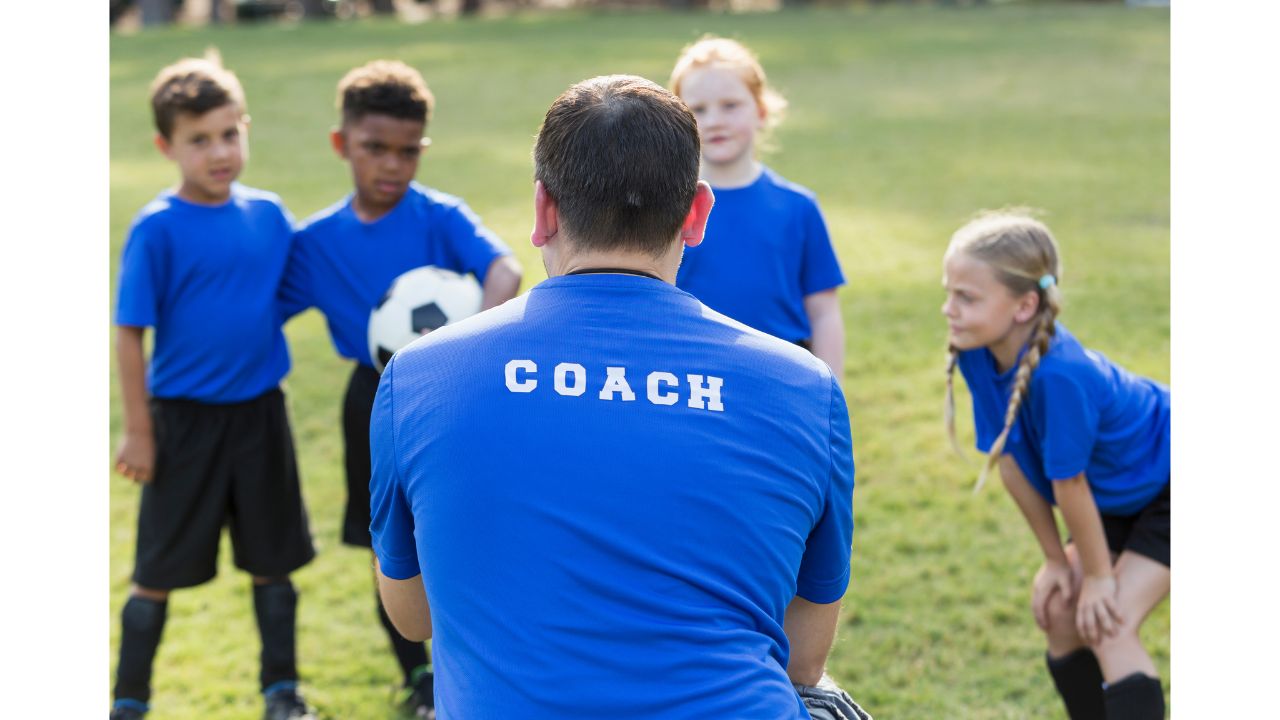Parenting can feel like a difficult dance to master. Our kids often yearn to do things on their own – expressed by toddler statements of “I do it” to their adolescent statements of “Leave me alone. I can do it!” As parents, we want to help them, but we have to continually let go. We can feel all sorts of feelings well up – fear, shame, uncertainty – when they push off, and then swells of love and relief when they come back and need help and comfort. We have to give them something to hold onto, but avoid getting too attached when they let go.
How can we be more like the side of a swimming pool for our kids?
Take a moment to think about how we use the side of a swimming pool. The side is a place where we can…
- dip our toes in to test the waters
- sit while we dangle our feet
- hold on to when we need to catch our breath
- push off when we are ready to dive or swim
- return to when it’s time to get out and rest
Lisa Damour, in her chapter “Parting with Childhood” in her book Untangled, writes about parents being like the “side of the swimming pool.” Our kids cling to us to catch their breath (wanting to be held, soothed, comforted). Then they push off to go swim on their own (saying no, running away from us when they are toddlers and picking a fight or saying a mean comment or suddenly preferring to be alone or with a friend as adolescents). The pushing off experience is often painful or scary as a parent. We miss the sweet dependence of our child. And yet, we know that they must push off to become their unique selves in the world.
Satisfying attachment needs frees up energy to mature
This question of how to let go to bring our kids closer is the core theme of this blog series on “How To Be a Good Parent.” When children feel that they can safely depend on us, they are more likely to mature and become independent. This could be taking their first steps or learning to drive. Our job is to love and accept our kids as they are, fostering their own belief in themselves and their desire to keep growing.
The book, Hold On To Your Kids: Why Parents Need to Matter More Than Peers by Gordon Neufeld, Ph.D. and Gabor Maté, M.D. offers excellent guidance about how to satiate our children’s attachment needs. By making sure that we are offering up warmth, something to hold on to, and orientation to the world, we free our children to mature and move forward on their own journeys. They are securely attached to us, and therefore more able to do their work of growing up.
In Part 1, we explored the idea of “getting in your child’s space” in a friendly way.
This time in Part 2, we’ll explore how to be that side of the swimming pool that children can hold on to…
Idea #2: Provide Something for the Child to Hold On To
As Neufeld and Maté say, “ The principle…is simple: in order to engage children’s attachment instincts, we must offer them something to attach to. With infants, this often involves placing a finger in the palm of their hand. If the child’s attachment brain is receptive, she will grasp the finger; if not, she will pull her hand away. “(p. 183) With babies to adults, emotional warmth, enjoyment, and delight are the top effective activators of attachment.
“If we have a twinkle in our eye and some warmth in our voice, we invite connection that most children will not turn down. When we give children signs that they matter to us, most children will want to hold on to the knowledge that they are special to us and appreciated in our life.
For our own children, the physical component is key. Hugs and embraces were designed for children to hold on to, and can warm up a child long after the hug is over.” (p.184)

Look Inward to Help Figure Out Your Child’s Needs
If you think back to your own childhood and the times you felt most connected to your own parents, you’ll get some clues as to what your own children crave from you. And if you think back to times where you felt rejected, misunderstood or neglected, those reflections about what you needed and didn’t get can give you clues about what your own children need. I often use a guided meditation process to help parents access this internal wisdom. People experience both inner healing as well as powerful wisdom for their current lives. Schedule a Clarity Call or email me if you want to know more. Big “Aha” moments often come from a single session.
Ask Your Children Directly What They Need
As our children grow up, we can ask them directly what they need. With practice, they will become more and more able to tell us. This question helps develop their ability to consider and articulate their needs, which is an important skill for all ages. It’s important to remember that they are their own people and to listen to what they tell us, especially as they enter adolescence. This is another dance we do – between listening to our own intuition and experience and connecting with theirs. It can be hard to let go as we learn to let them choose when to hold on to us.
Our goal is to invite our children to exist in our presence exactly as they are. We want to show delight in them through frequent positive and spontaneous interactions. To establish a strong attachment, we must offer invitations to connect and “hold on” when it is not expected. Otherwise, those efforts can be just linked to an event or a transaction. However, we must also accept when they don’t take us up on our offers, and not take it personally. I often work with parents on this dance in my parent coaching sessions.
Some ways to give our children “something to hold onto” include:
- Gestures that demonstrate affection – hugs, pats, proximity, looking warmly into their eyes when they are talking, putting down our phones, and showing warmth through our friendly touch
- Kind words that show curiosity and interest (instead of judgment, suspicion, blame or shame) – noticing specific things that show that you are paying attention
- Surprise offerings – a spontaneous treat, game, cup of tea, hug or little gift (like getting their favorite snack or shampoo) –just because you are thinking of your child
- Invitations for contact when the child is not expecting it. (This way the child doesn’t feel he or she needs to earn it. It is freely given) – Suggestions of spontaneous play time, doing an errand together, or going outside to look at a sunset or moonrise…sharing moments of awe or wonder.
Be strong and stable like the side of the swimming pool
One reality to keep in mind is that while we are offering to connect with our child, they will invariably push away and reject our offers some of the time, and we need to not take this personally. In these moments, Damour says we must do the following (p. 22-23):
- Anticipate the push-off: Enjoy it when your child comes to you and let your child go when he or she wants to be independent again. Let your child know if they hurt you with a mean comment or action, but don’t belabor your point.
- Stand strong: Avoid taking rejections personally and stay available. It can be tempting to be unavailable in order to avoid pain, but there is a cost, so work to be able to weather the storms and push-offs that will come.
- Rally your supports: Seek out people who support you. They will remind that you are a wise and loving parent who can withstand the comings and goings of your child.
This metaphor of being like the side of the swimming pool has helped me personally many times – to stand strong, let unpleasantness roll off of me, and seek the support of fellow parents standing with me. As we practice, our trust in both ourselves and our children grows, and we can relax and feel confident more often. Being the side of the swimming pool takes practice, and it’s well worth it. We are giving our children something strong to hold on to when they need it, so they can keep doing their work of gaining trust in themselves. As they gain this self-trust, they feel good about themselves and their ability to handle challenges.
Want to learn more? Check out the other blogs of this series:
 Connect with your child through the dance of attachment
Connect with your child through the dance of attachment
 Act as the North Star for your child
Act as the North Star for your child
Reach out if you want support.
If you need guidance, schedule a Clarity Call with me and we can design some next steps that best fit you and your family. We all have unique needs and styles of being. It feels good to have someone in your court to help you connect the dots, stay strong, and learn to bend and trust as your children grow up. Your children will thank you for focusing on this dance of attachment with them through their love and connection to you. And you’ll have more fun along the way, too!
Lastly, if you are interested in scheduling an Inner Counselor Meditation Session with me to access your inner wisdom, email me. You will walk away feeling deeply relaxed and energized, empowered with inspiring metaphors and mantras that help you better meet your needs and feel more at peace.
Who I serve: I coach parents from coast to coast in the US and internationally. Thanks to Zoom, I am currently coaching parents from Boston to Seattle, Connecticut to California, as well as New York, Ohio, and Colorado. I’ve worked with parents in Bermuda, Japan, Portugal, and Canada as well. I’m grateful for these global and domestic connections!








Leave A Comment